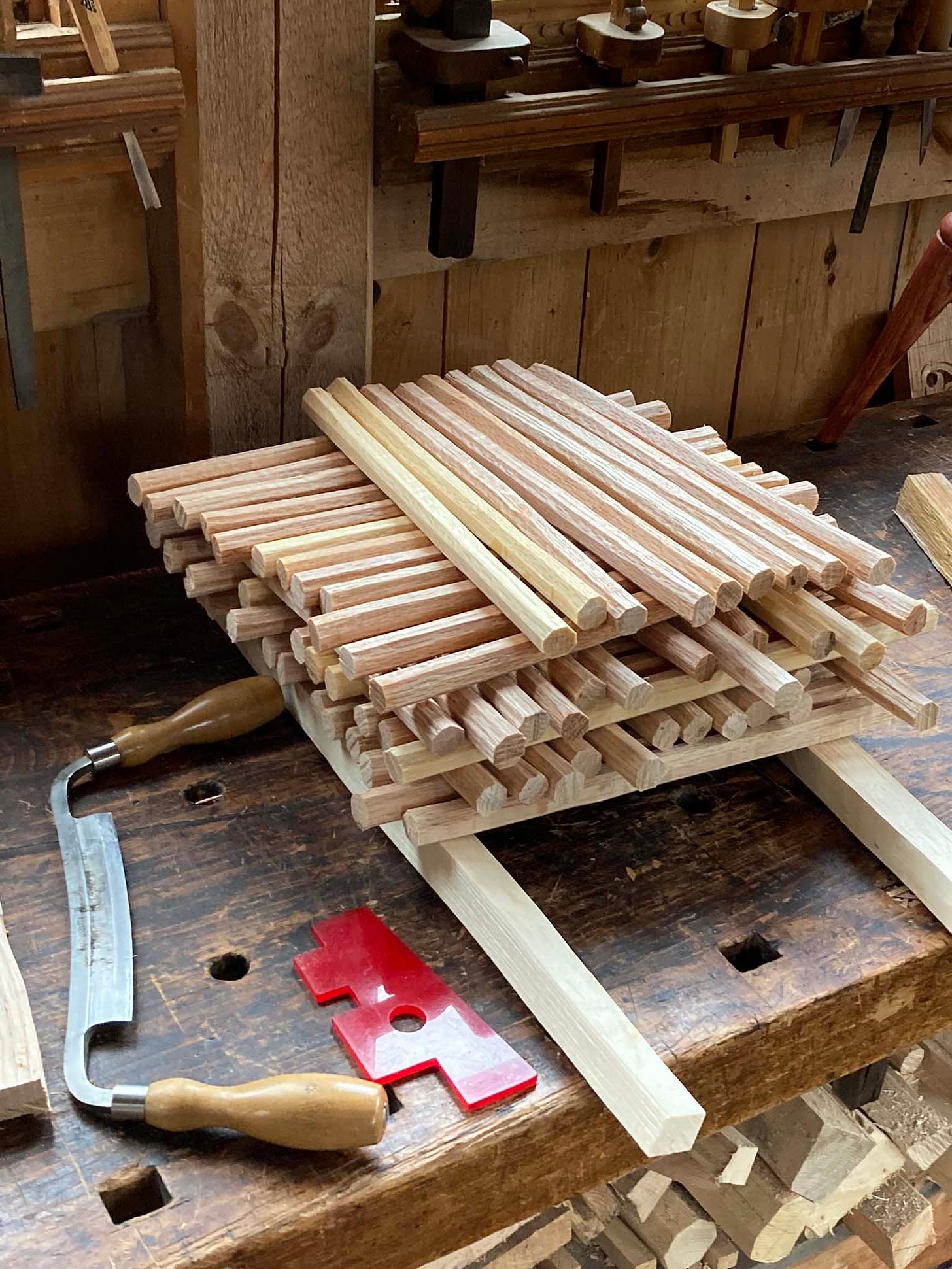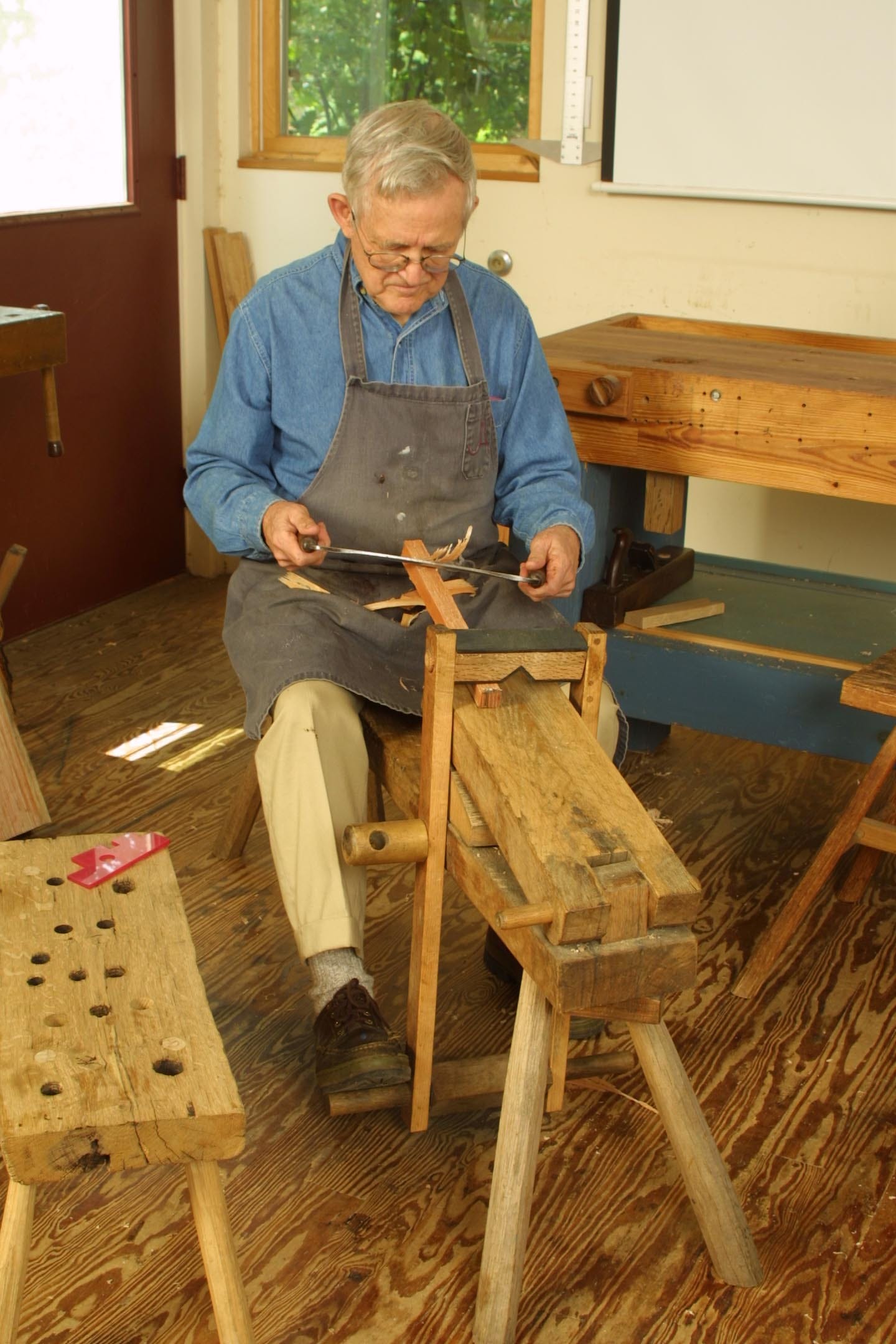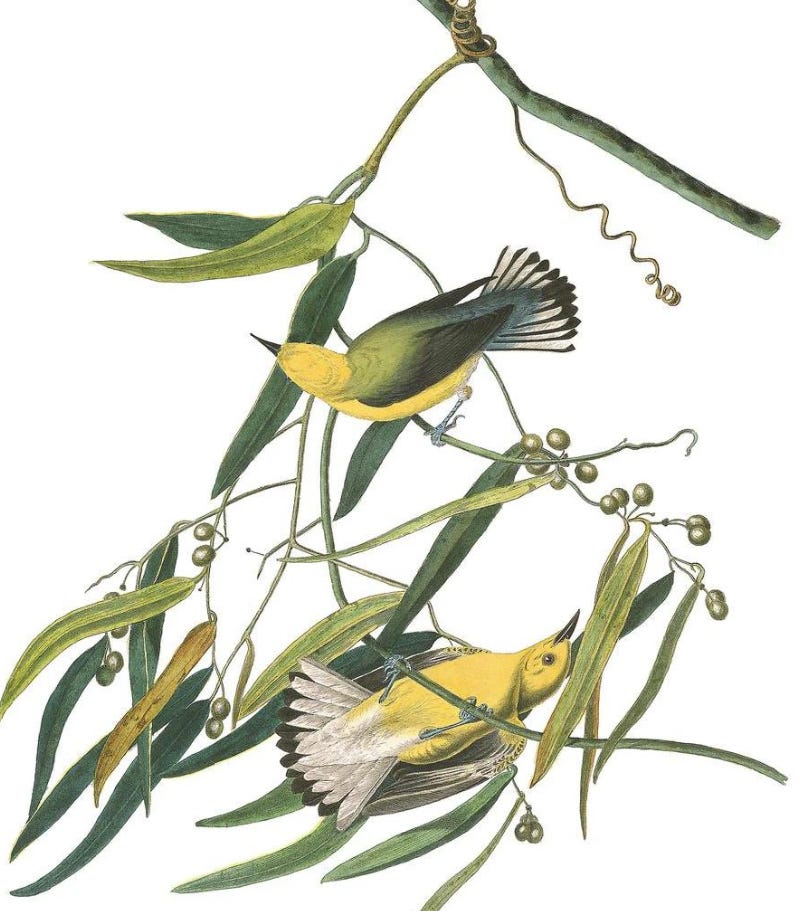[a post available for all subscribers - just what the title says, memories of my time with Jennie Alexander, a key figure in the book I’m researching and writing, that I call my craft genealogy.]
I started my day today shaving chair rungs that I split out late in the day yesterday. When Rick McKee & I split up this red oak log this week, there were places where we cut around large knots. This blank is only 15” long and at first glance is firewood - but some careful splitting yields a lot of chair rungs from it.
The first one of these gave me almost 6 dozen rungs -
There’s no way I can do that work without thinking of Jennie Alexander (1930-2018). I recently showed an early draft of the beginnings of my Craft Genealogy book to Chris Schwarz - one of his comments is that I need short introductions to the people in the book. I don’t do short very well, I usually have too much to say, especially when it comes to this project. But I get it, it makes sense to introduce the characters in the story. This is not that introduction.
Many readers are familiar with Alexander’s story - much of which has been covered many times now. I’ll start where Chris Schwarz started some years back when writing about Jennie -she started life (in 1930) as John D. Alexander, Jr. In her late 70s, she transitioned to how she is now known - Jennie Alexander - conveniently keeping her initials JA.
To the woodworking sphere of the world, she is best-known as the author of the 1978 book Make a Chair from a Tree. (Recently released in its 3rd completely revised edition through Lost Art Press). That book put her on the map, so to speak. She was a self-described “informed amatuer’ - a position she reveled in.
We think of her as a chairmaker - and while that took up a lot of her time and thought, it was never her livelihood, never was going to be so. Her “cash crop” was the law - a Baltimore lawyer, specializing in “family” law - an ironic term because most of her work was about divorce. “I meet all my clients at the worst time in their life…” she told me on more than one occasion.
But before the law - there was the piano. Jazz. I could never get straight whether she thought of herself as a “moldy fig” - a term she used a lot. At times it seemed so, other times not. And I see today that the battle lines around what is moldy fig jazz shifts here and there. So JA’s love of Monk might fit with the moldy jazz moniker after all. A short career in music - then a detour into the law. Then picked up the music late in life again, before her health declined to the point where she couldn’t commit to any public performances.
And fishing. I did a few stints as a part-time picture framer to support my green woodworking habit and framed lots of stuff for JA. One of them was a beaming photo of her holding some fish she’d wrangled out of the water down in the Florida keys. For decades she was an avid fisherman - probably until health problems made the travel associated with fishing difficult.
One print I found when we cleaned out the house after her death was a small reproduction of Audubon’s prothonotary warbler (Protonotaria citrea).
I enjoyed birds back then, but had yet to meet my friend Marie who taught me about warblers and their significance in spring migration - the drug that turned me from bird enthusiast to bird freak. I framed the print for Alexander and asked her why she wanted that particular image. “For my office...” and then came the story, history lesson and moral and all. It turned out to be about the Alger Hiss case - a chapter in the Red Scare in America, which helped propel Richard Nixon to the national stage. Ugh. But the gist of it is that when asked to prove that he actually knew Hiss, Whittiker Chambers told the story of Hiss excitedly describing his sighting of a prothonotary warbler along the Potomac. When the committee then questioned Hiss about his hobbies, he told the story of the warbler. The story is more complicated than that - but that’s the guts of Alexander’s interest in the framed print. And the moral? In her office, she’d point to the print and tell the story - then the punchline to the client is “Be careful what you say, be careful who you say it to.”
I never knew anyone who read as much as JA. Piles and piles of books, fiction, non-fiction, woodworking, history, science and more. And wrote letters. And made phone calls, none of which were short. She’d write her letters in her notebooks, photocopy them and mail the photocopy to the recipient. So in her papers at Winterthur Museum are her outgoing (and some of the incoming) letters - thus I can point to when she introduced herself to Dave Sawyer, Rich Starr, Drew Langsner and more. She and I began our full-tilt collaboration on joinery in 1989 and our subjects would often detour all over the place. Sometimes these detours stemmed from what books were piled beside JA’s dining chair. I saw a newspaper article last week and thought of JA:
Consider the skeuomorph. That delightfully oddball coinage, dating to the late 19th century, is what the Oxford dictionary folks call “an object or a feature that copies the design of a similar object made from another material but does not usually have the practical purpose that the original does.”
Even as I type these words into a Microsoft Word document, a skeuomorph hovers nearby. Up in the left corner, there’s a sort of square jobbie, adorned with a little rectangle at the top and a slightly littler one at the bottom. Everyone knows that clicking on it will save what has been written, but only users of a certain vintage will recall the image as a representation of a quaint storage device that has gone the way of the steamer trunk. (“If you’re still using these dated words, you’re not alone” Benjamin Dyer, Washington Post, Mar 12, 2024)
We had a flurry of correspondence at one point about skeuomorphs. What I recall is JA explaining them as decorative elements that mimicked what used to be structural elements. You can’t swing a cat without running into them - and as I write that, I think of Mark Twain - where I first heard that expression. And Twain was another detour for JA & I...but that’s enough. I told you I can go on & on.
And I have yet to see a prothonotary warbler. They rarely come this far north.
links:
https://lostartpress.com/products/make-a-chair-from-a-tree








You're very welcome. I am familiar with that phrase, but searched today for some of its origins. Funny to think of JA that way - she was 5'4" in her prime...
Reading your loving reflections on JA gives me hope for the world. I had a friend who transitioned from Rick to Ashley and I'm thankful for the experience. Working together for almost twenty years, she kept the same quick wit and sarcasm - complaining about running a huge printing press, but always showing kindness and a sincere interest in other people. We could all benefit from a Jennie or Ashley in our genealogy.